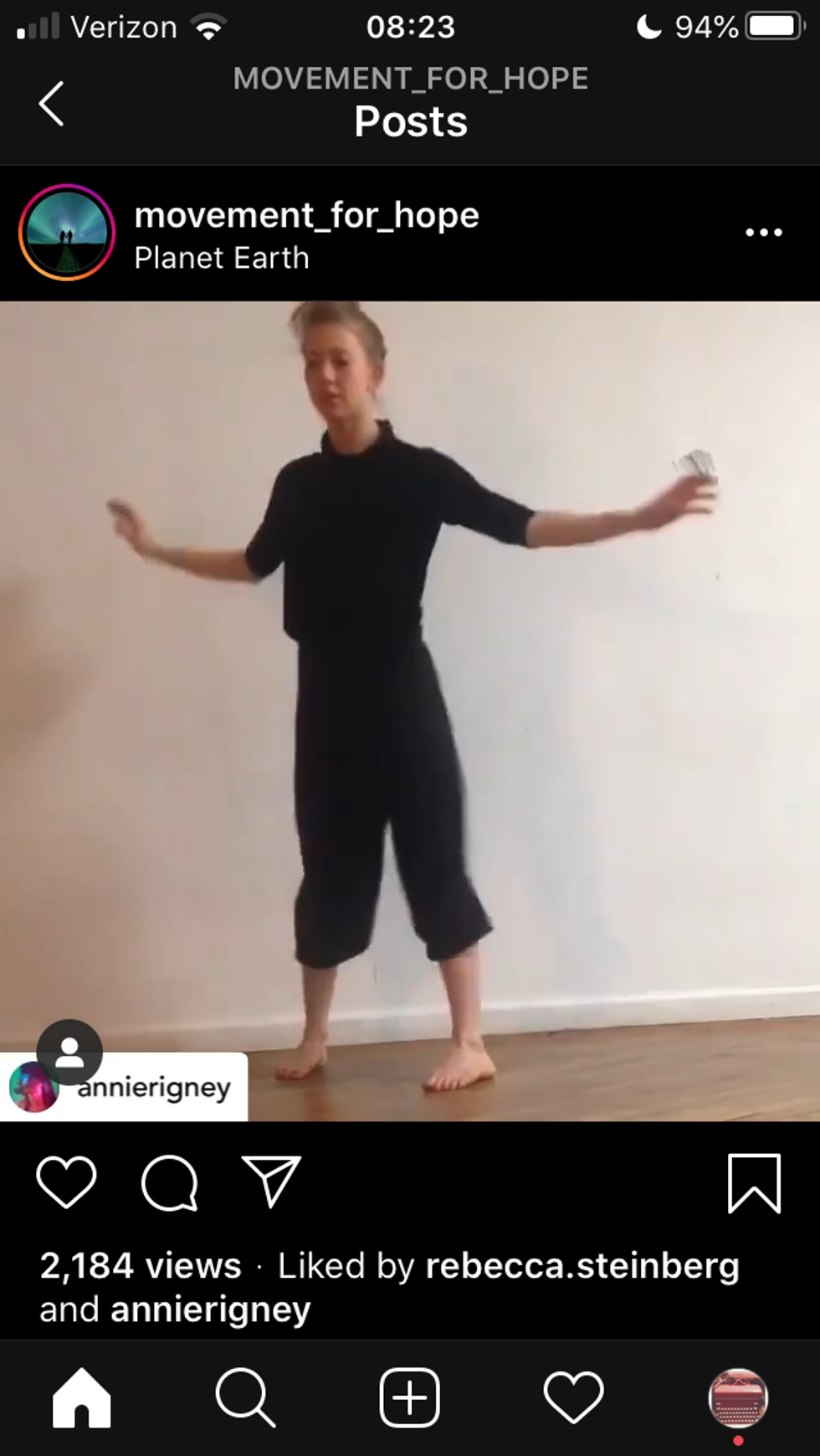Staying Connected From Our Living Rooms: What It’s Like Dancing During a Pandemic
It’s Sunday and it’s quiet; all the usual weekend noise of the college town in which I live has lessened considerably. I set up my computer on my dining room table, move some chairs away, and click on the link to Dance Church’s first online class. I see a familiar scene: dancers in a studio chatting, stretching, doing things we all do while waiting for class to begin. It’s comforting to watch . There’s blissful, beat-driven music playing and soon, Kate Wallich comes on the screen; she’s smiling warmly as she reads through the ground rules before we begin without stopping. It’s an experiment, she says, and I feel lucky to be a part of it.
During class the dancers’ energy is radiating; I can feel it all the way across the country. I find myself singing, stomping (sorry downstairs neighbor), laughing and crying. It’s the first time I’ve cried out of immense joy in a long time. Throughout the entire class I feel uplifted, with my community. To dance is to be connected.
Dance Church isn’t the only class I’ve taken since the world has become an increasingly uncertain and unstable place. I’ve also taken Gaga, FoCo, and improv from some of the most incredible teachers in the country, all classes that were offered in abundance in most major cities until this past week. I’ve been able to move with many of my dance friends who are living throughout the world and as a result, who I don’t get to take class with on a regular basis.
As a dancer, it’s been hard living away from New York City. I used to walk to the majority of the dance classes I took; the ones that required a subway ride were never more than 30 minutes away. Though I now visit New York every month or so for work, I miss being able to take these classes regularly. They were important for improving, honing and investigating my technique and relationship to dance as an artist. But they were also sites of community. I miss moving with all of the amazing beings who come to dance classes, and I’ve found it’s difficult to find these opportunities outside major cities.


Dancing digitally allows this community to manifest despite our physical separateness. On some platforms, such as Zoom, I’m able to see others moving in their bedrooms, backyards, dining rooms. But even when I can’t see other people moving, I feel comfort in knowing we are all doing the same movements at the same time.
Even though the Dance Church livestream showed dancers moving together in a studio, because of the ever-changing situation, now teachers are having to teach alone in whatever space they have access to (most often, their living rooms).
Movement artists are doing this to support their community, but also for another reason: due to the closure of studios, venues, and festivals, artists are finding it difficult or impossible to provide basics for themselves such as rent, food and utilities. Not knowing how long closures will last makes this financial instability even more difficult.
Dancers and dance enthusiasts can support teaching artists not only by showing up for their digital classes, but also by giving to them financially. If you choose to take a class (Dance Magazine has a great list of current opportunities) and if you are able to contribute in any way financially, please do. The survival of our community depends upon it.



